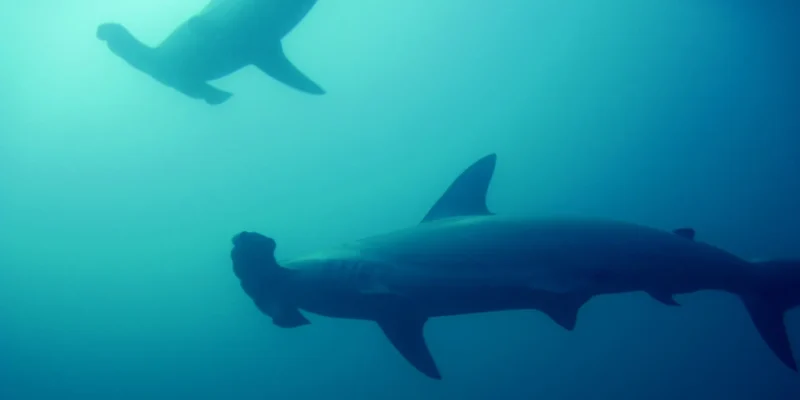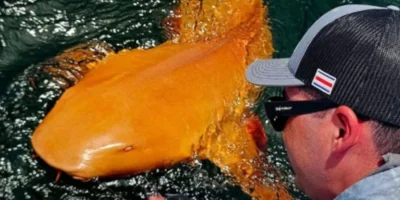The great hammerhead (Sphyrna mokarran) relies on high risk – and high reward – when hunting. While many shark species prefer smaller, more common prey, the great hammerhead specifically targets large animals, including other sharks such as blacktips. New research published in the journal Oecologia shows that this strategy offers energetic advantages: by hunting large fish, rays, or other sharks, the hammerhead can meet its energy needs much more efficiently.
Mathematics of survival
Erin Spencer of Florida International University, lead author of the study, explains: If the great hammerhead eats a whole blacktip shark every three weeks during the period when blacktips are abundant, it has enough energy to survive low-prey periods – for up to two months – without starving. Newly deployed biologging technology – including sensors for speed, sonar, and video – allowed the researchers to precisely record the sharks’ swimming speeds, metabolism, and prey encounters.
A model shows that a hammerhead weighing around 110 kg would need only one roughly 25 kg blacktip shark every three weeks to meet its energy needs. In contrast, it would have to catch one to two reef fish weighing about 1 kg each every day to reach the same energy level.
Decisions under energy constraints
Yannis Papastamatiou, behavioral ecologist at Florida International University, sums up the conflict: “Do we hunt large but elusive prey – with high reward? Or do we take any prey that comes along?” The study provides important insights into why the great hammerhead prefers to hunt larger prey such as sharks or rays – more energy-efficient and effective.
Protection strategy for the endangered hunter
The study is not only scientifically groundbreaking but also a building block for the species’ protection. According to the IUCN, the great hammerhead is globally endangered or even at risk of extinction. Only by understanding its biological needs and preferred hunting grounds can we develop effective conservation measures. The study also demonstrates the capabilities of modern biologging and modeling techniques – especially for marine giants that are difficult to observe.
Biological background of the hunting strategy
The distinctively shaped head – the so-called cephalofoil – gives the great hammerhead special advantages: an almost circular field of vision, particularly accurate depth perception, and an expanded electromagnetic sensory field through the ampullae of Lorenzini. This enables it to precisely locate hidden prey, such as rays buried in the sand. These senses not only allow targeted hunting of large prey but also increase feeding efficiency – another factor supporting the optimal foraging model.




